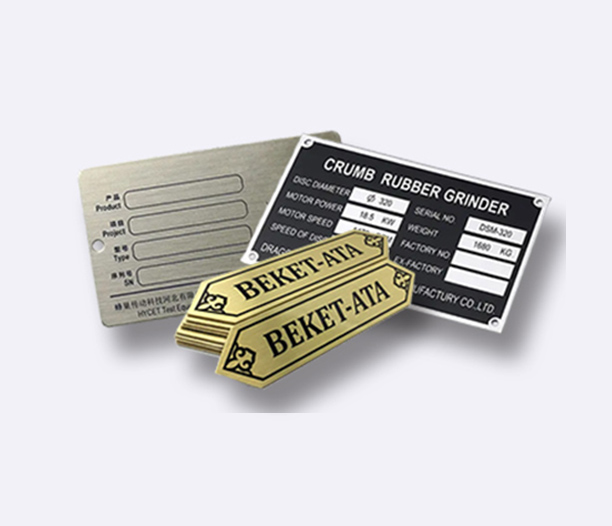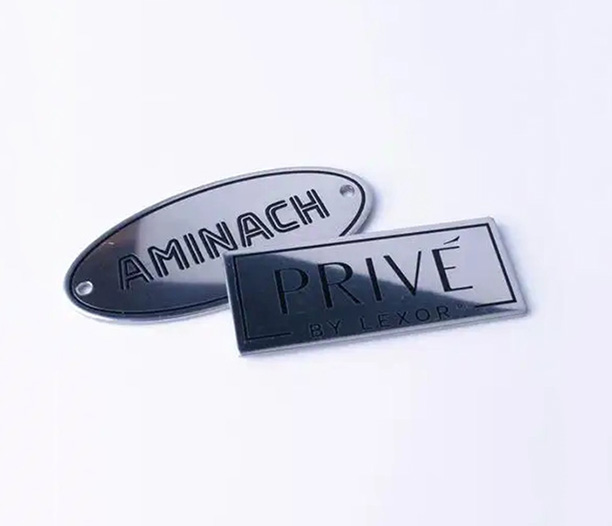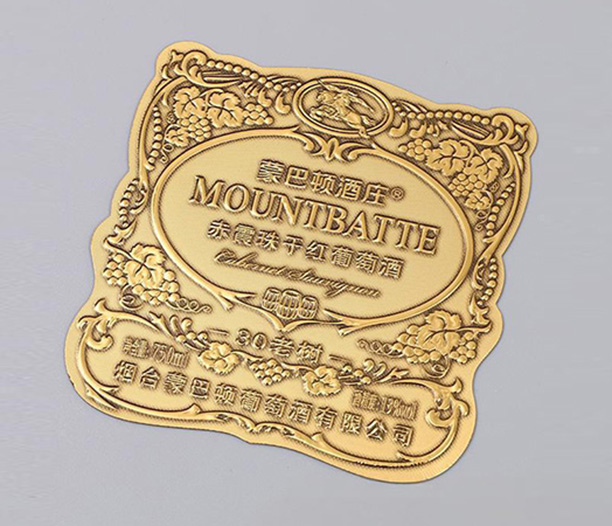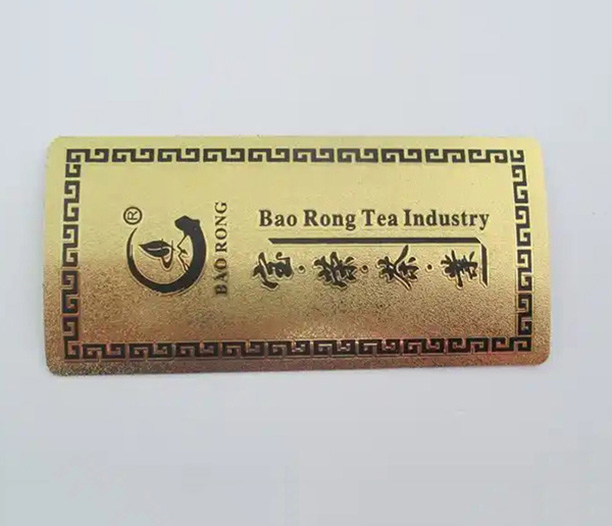In the world of industrial operations, manufacturing, and asset management, the ability to reliably identify equipment is non-negotiable. From a single handheld tool to a multi-million dollar machining center, every asset tells a story through its label. This story includes its identity, maintenance history, safety warnings, and operational status. If that label fails—fades, peels, or becomes unreadable—the story is lost, leading to inefficiency, safety risks, and costly mistakes.
This is where the critical importance of durable labels for equipment comes into sharp focus. They are not merely stickers; they are engineered systems designed to withstand the most punishing environments imaginable. This comprehensive guide will walk you through the five essential factors for selecting the right durable labels for equipment, delve into common failure points, and provide solutions to ensure your asset identification system remains intact and legible for years to come.

What Are Durable Labels for Equipment?
Durable labels for equipment are specialized identification tags designed to adhere to and survive on assets operating in harsh conditions. Unlike standard paper labels, they are constructed from robust synthetic materials, paired with powerful adhesives, and shielded by protective overlaminates. Their primary purpose is to convey critical information permanently, ensuring that data is always available for scanning, safety, compliance, and operational purposes.
The information they carry is vital:
Asset Identification: Serial numbers, model numbers, and QR codes for tracking.
Safety & Compliance: Hazard warnings, safety instructions, and certification marks (UL, CE).
Maintenance & Operation: Barcodes for work order tracking, maintenance schedules, and operating parameters.
Branding & Ownership: Company logos, brand names, and contact information.
The fundamental goal of using durable labels for equipment is to create a permanent link between the physical asset and its digital record in a database, ensuring accuracy and efficiency throughout the asset's lifecycle.
Key Material Considerations for Long-Lasting Labels
The durability of a label is fundamentally a product of its material composition. Choosing the right face stock is the first and most critical step in selecting durable labels for equipment.
Polyester (PET): The industry standard for durability. Polyester offers an exceptional balance of chemical resistance, temperature tolerance (typically from -40°F to 300°F / -40°C to 150°C), tear resistance, and dimensional stability. It's ideal for equipment labels that will face exposure to oils, solvents, and moisture, such as on manufacturing machinery, automotive components, and electrical panels.
Polyethylene (PE): A more flexible and conformable material than polyester. Polyethylene labels excel on curved or irregular surfaces and have excellent resistance to moisture and tearing. They are a common choice for durable labels for equipment in outdoor applications, agriculture, and logistics where some flexibility is required.
Vinyl: Known for its durability and cost-effectiveness, vinyl is a versatile material suitable for both indoor and outdoor use. It provides good resistance to water, abrasion, and weather, making it a popular choice for warehouse bin labels, outdoor asset tags, and general equipment identification where extreme chemical resistance is not a primary concern.
Polyimide (e.g., Kapton®): This is the high-temperature champion. Polyimide labels are designed to withstand the intense heat of soldering processes, circuit board assembly, and continuous exposure to extreme temperatures (exceeding 500°F / 260°C for short periods). They are essential in the electronics and aerospace industries.
Metal (Aluminum or Stainless Steel): For the most extreme environments involving high heat, physical impact, or corrosive chemicals, metal labels are the ultimate solution. Information is typically etched, engraved, or stamped into the metal, ensuring permanence. They are used on heavy machinery, pipelines, and in settings where all other materials would fail.
The Role of Adhesives and Protective Overlaminates
A label is only as good as its bond to the surface. The material choice is irrelevant if the adhesive fails. Similarly, the printed information must be protected from the elements.
Adhesives: The right adhesive is chosen based on the surface texture (smooth, textured, porous) and the surface energy (high-energy like bare metal, or low-energy like plastics such as HDPE or polypropylene).
Acrylic Adhesives: Offer a clear, strong bond with excellent resistance to aging, temperature, and UV light. They are the most common choice for a wide range of applications.
Rubber-Based Adhesives: Provide a very aggressive, high-tack bond initially, making them good for difficult surfaces, but they can degrade over time with exposure to UV and heat.
Permanent vs. Removable: For equipment labels, a permanent adhesive is almost always required.
Protective Overlaminates: This is a clear, durable film applied over the printed label. It acts as a shield, protecting the ink from:
Abrasion: Being scratched or scraped off.
UV Light: Preventing fading from sun exposure.
Chemicals: Creating a barrier against solvents, oils, and cleaners.
Moisture: Sealing the print from water and humidity.
Using a quality overlaminate is what transforms a good label into a truly durable label for equipment, extending its lifespan exponentially.
Printing Technologies for Durable Equipment Labels
How you print your labels is just as important as the material you choose. There are two primary methods for creating durable labels for equipment:
Pre-Printed Labels: Ordered from a manufacturer for high-volume, consistent needs. They often use printing techniques like screen printing or flexography, which can apply very thick, durable layers of ink. This is ideal for nameplates with fixed information like serial numbers or safety warnings.
On-Demand Printing (Thermal Transfer): This is the most flexible and common method for printing variable information (barcodes, unique asset IDs, dates) in-house. It requires two components:
Thermal Transfer Printer: An industrial-grade printer.
Ribbon (Ink Roll): The choice of ribbon is critical.
Wax Ribbons: For basic, indoor paper labels. Not durable.
Wax-Resin Ribbons: A blend offering better smudge and water resistance than wax alone. Good for some synthetic materials in moderate environments.
Resin Ribbons: Essential for creating durable labels for equipment. The resin-based ink is designed to bond permanently with synthetic materials like polyester and polypropylene, creating a highly chemical, abrasion, and heat-resistant image.
Crucial Tip: Always match your ribbon type to your label material. Using a wax ribbon on a polyester label will result in a non-durable image that will quickly wipe off.

Common Problems and Failures (And How to Solve Them)
Even the best labels can fail if not selected or applied correctly. Here are the most common issues and how to prevent them.
Problem: Label Peeling or Falling Off
Causes: Surface wasn't cleaned properly (dust, oil, grease). The wrong adhesive was used for the surface (e.g., a low-energy plastic like PPE). Application temperature was too cold.
Solutions: Thoroughly clean the surface with an isopropyl alcohol (IPA) wipe and let it dry. For difficult surfaces, specify a label with a high-tack, aggressive adhesive designed for low-surface-energy plastics. Apply labels within the recommended temperature range (usually above 50°F / 10°C).
Problem: Faded or Unreadable Text/Barcodes
Causes: UV exposure from sunlight, chemical degradation, or use of an incorrect print ribbon.
Solutions: Select a material with UV resistance. Use a protective overlaminate with UV blockers. For printed labels, ensure you are using a full resin ribbon to create a chemical-resistant image.
Problem: Label Scratched and Worn
Causes: The label material is not durable enough for the level of physical abrasion it encounters.
Solutions: Upgrade to a more abrasion-resistant material like a thick polyester (e.g., 5 mil or greater). Apply a thick, protective overlaminate to create a hard, protective shell over the print.
Problem: Poor Barcode Scan Rates
Causes: Low print contrast, glossiness causing glare, or damage to the barcode.
Solutions: Use high-quality printers and ribbons to ensure a high-contrast, sharp print. Use a matte or anti-glare overlaminate to diffuse light and prevent scanner "bloom." Protect the barcode from direct contact with abrasives.
Problem: Bubbling or Edge Lifting
Causes: Often occurs on curved surfaces when using a rigid label material, or due to outgassing from certain paints or plastics.
Solutions: Use a more flexible face stock like polyethylene or a thin-gauge polyester. For problematic surfaces, allow newly painted or manufactured items to fully cure before applying the label.
How to Choose the Right Durable Label for Your Application
Selecting the perfect durable label for your equipment requires a systematic approach. Ask these key questions:
Surface: What is the equipment made of (metal, plastic, glass)? Is it smooth, textured, or curved?
Environment (The Most Important Factor): Indoors or outdoors? Exposure to chemicals/oils? Temperature extremes? UV/sunlight? Moisture/humidity? Physical abrasion?
Durability Needs: How long must the label last? 1 year? 5 years? The life of the equipment?
Information Type: Is the data fixed or variable? Will you need to print in-house?
Compliance: Are there specific industry standards the label must meet (e.g., UL, MIL-STD-130, BS 5609)?
By carefully working through these factors, you can specify a labeling solution that will perform reliably, protecting your operational integrity and your valuable asset investments.
Durable labels for equipment are a fundamental component of modern industrial operations, acting as the critical bridge between the physical and digital worlds. Viewing them as a simple purchase is a mistake; they are a strategic investment in efficiency, safety, and compliance. By understanding the core components—materials, adhesives, overlaminates, and printing technology—you can make an informed decision that prevents common failures and ensures your labels last as long as the equipment they identify.
Taking the time to correctly select and apply the right durable labels for equipment will pay for itself many times over by avoiding the hidden costs of downtime, misidentified assets, and safety incidents. Don't let a failed label be the weakest link in your operation.





